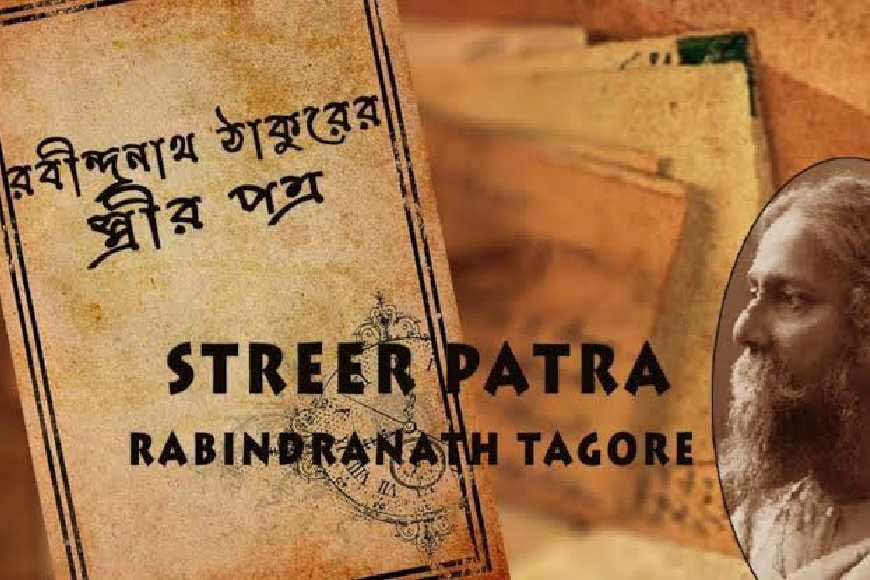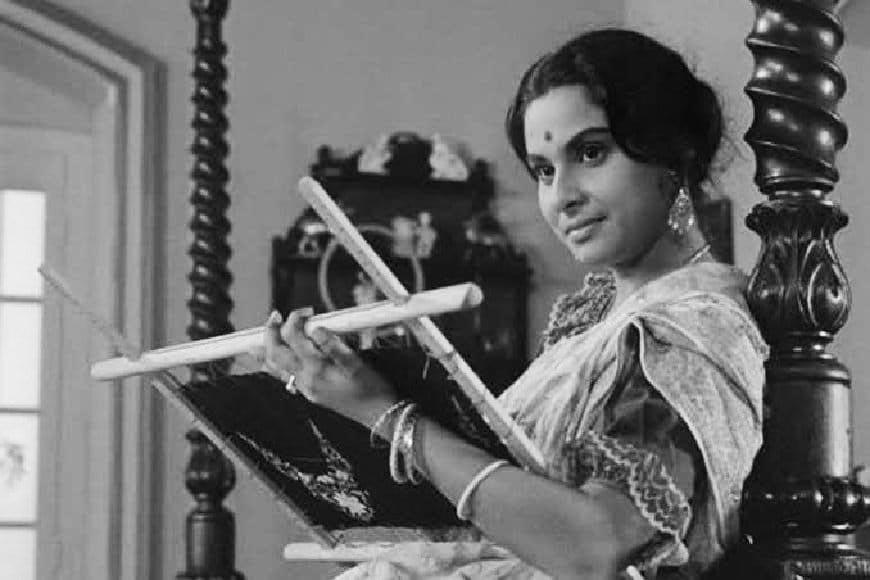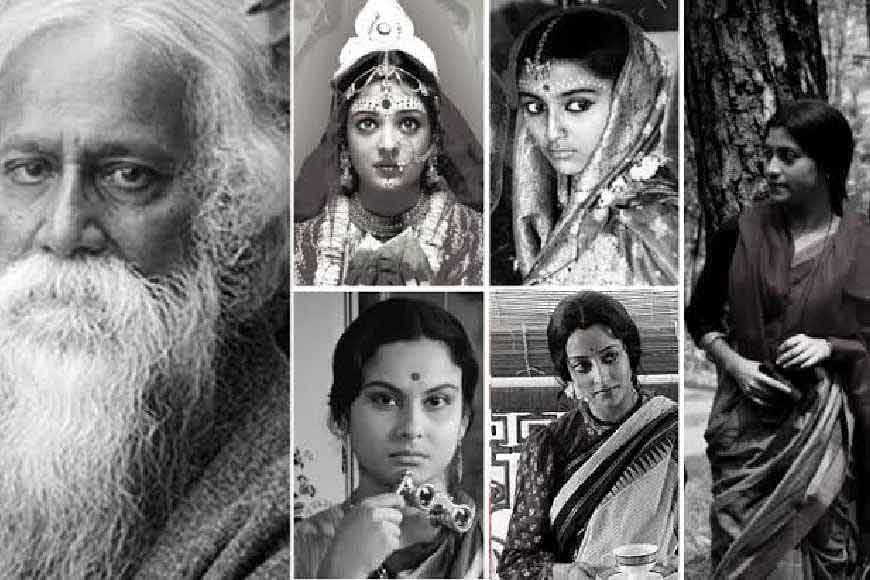Women’s Day Series --- Mrinal of Tagore’s Streer Patra defies the ‘happy marriage’ syndrome

Although women constitute half of society, for countless centuries, their position has been abysmal. In the early history of India, women walked the earth as equals of men but foreign invasions, a thousand years ago, drove them into a long exile. The middle of the 19th century was an epoch-making era in the annals of India’s history when in colonial Bengal, various patriarchal ideologies were challenged by many social reformers like Raja Rammohan Ray and Ishwar Chandra Vidyasagar. In fact, Bengali women in those days contributed to myriad fields by being directly involved and even leading from the forefront. But alas! Society found it convenient to either overlook or ignore them. Hence, the responsibility to resurrect these independent, free-thinking, liberal and brave women fell upon the authors and poets. Bengali authors, many of whom were women themselves, created a gamut of female characters who are a beacon of hope for the oppressed even today. As part of International Women’s Day celebrations, we shall highlight some iconic female characters from Bengali short stories or novels who have left their indelible mark on life and literature
To begin with, we have, who else, but Rabindranath to fall back on? The mid-19th century was an era of great social and political upheaval when the nationalist movement against colonial rule gained momentum. It was also a time of a ‘literary revolution’ in Bengal, pioneered by Bankim Chandra Chattopadhyay. These developments greatly influenced the writings of Rabindranath Tagore and evoked empathy and social consciousness not only towards uprooting social evils but especially toward women’s emancipation. His writings not only voice the pathos and sufferings of the female protagonists but also act as an interface to liberate them from oppressive social bondage. His portrayal of female characters and their predicaments to break the patriarchal social conventions is well represented through his short stories. As rightly asserted, Tagore’s representation of female characters in his short stories depicts three facets of women’s lives --- i) Romance between men and women ii) social oppression of women iii) birth of the – new woman- that is, a woman who challenges convention and seeks to make decisions about her own life.

Tagore wrote about the real women of colonial India in all their raw glory, when they were way ahead of it, maybe even to the present day. Women confront questions of chastity, sexuality, domesticity and self-identity. Take for example Mrinal, from his short story, ‘Streer Patra’ (1914) which deals with the complexities of every woman.
Mrinal is the protagonist of Rabindranath’s short story, ‘Streer Patra’ (A Wife’s Letter). She is one of the strongest female characters in Bengali literature. The story was published in the fourth issue of ‘Sabuj Patra,’ a monthly magazine edited by Pramatha Chowdhury in 1914. The story flows in the form of a letter, Mrinal, the ‘Mejo Bou’ (wife), writes to her husband after leaving him and their ‘ghor sansar’ (her abode) for good.
The letter is a reflection of 15 years of Mrinal’s soulless marriage. Mrinal is married into a well-to-do family in Kolkata. Her good looks made her a ‘trophy wife’ but her great talents became a problem. Through the 15 years of marriage, Mrinal hides away and writes poetry in the cowshed every day, suffers a miscarriage, and witnesses the suicide of the ill-treated, low-caste ‘Bindi’ whom she had raised for years as her daughter.
She escapes from home in silence to the beaches of Puri. In front of the ocean and under the monsoon sky, she relinquishes her identity:
In the world of 20th century India, Mrinal did not suffer what people would typically call grief. She saw no poverty or physical abuse, but that is precisely the notion that ‘Streer Patra’ imparts the deserved significance to that domestic dissatisfaction and mistreatment are not dramatic acts of violence. That women (and men) should strive for more than the standards of a seemingly happy marriage that the tradition glorifies.
If marriage is the divine union of a woman and man, that union is only possible when both parties stand on equal ground, otherwise, they simply fail to transcend their material reality. A woman does not enter the institution of a marriage with the sole purpose of service to the man and the household. Our identities are so much more than that. And it often requires mustering the courage to listen to our inner voices and reassess the roles created for us but not necessarily by us. We can or cannot choose to be a wife, a daughter-in-law, or a mother. And regardless of what our choices might be, it is so important to have our inner lives known.

Tagore’s literary work focused on the intricate and complex nature of human relationships. Unconventionally, Tagore portrayed his women as chance-takers who defiantly resisted social and familial norms in a conservative Indian society. Tagore’s women were progressive and provided a fresh perspective to the minds already filled with traditional Indian values. From Bimala of Ghare Baire to Binodini of Chokher Bali, Tagore made sure that the women in his novels were ambitious, free and headstrong. Tagore’s female characters were living, breathing, spitfires of desire and ambition. The underlying resentment and dignity in them is what made them relatable. They weren’t mere ornaments in a man’s life. They demanded to be treated and respected as human beings. Mrinal’s letter to her husband of 15 years is a scathing lament of a woman who was robbed of her dignity from the moment she was married at the age of 12. Her lament was not for herself alone, it was for her sister-in-law, her sister, and how she was feared for her intelligence when everyone in her family would rather have her be just another pretty face. Mrinal’s every word rings scornfully. Her feminism lay in her unleashing her unbound anger through her letter. This was an act of revolution and remains so in a world that condemns women who refuse to reign in their anger, who refuses to back down, who refuse to bow down.
Focusing largely on emancipation, his writing campaigned for liberation, equality, freedom, justice, power, dignity and rights for women. Inspired by these feminist women, Tagore’s stories and novels have been brought alive a number of times on celluloid. Filmmaker Satyajit Ray went on to make a number of movies based on Tagore’s writings. So did many others and the legacy is still being carried on by other directors throughout the country.










